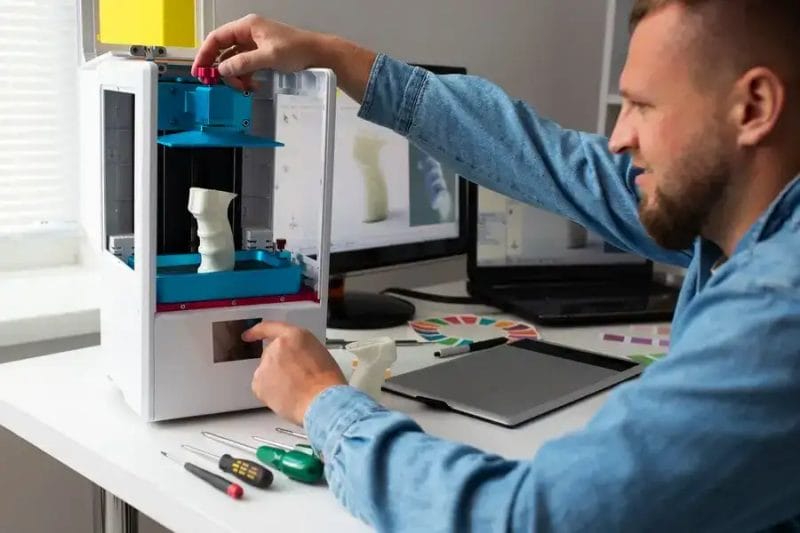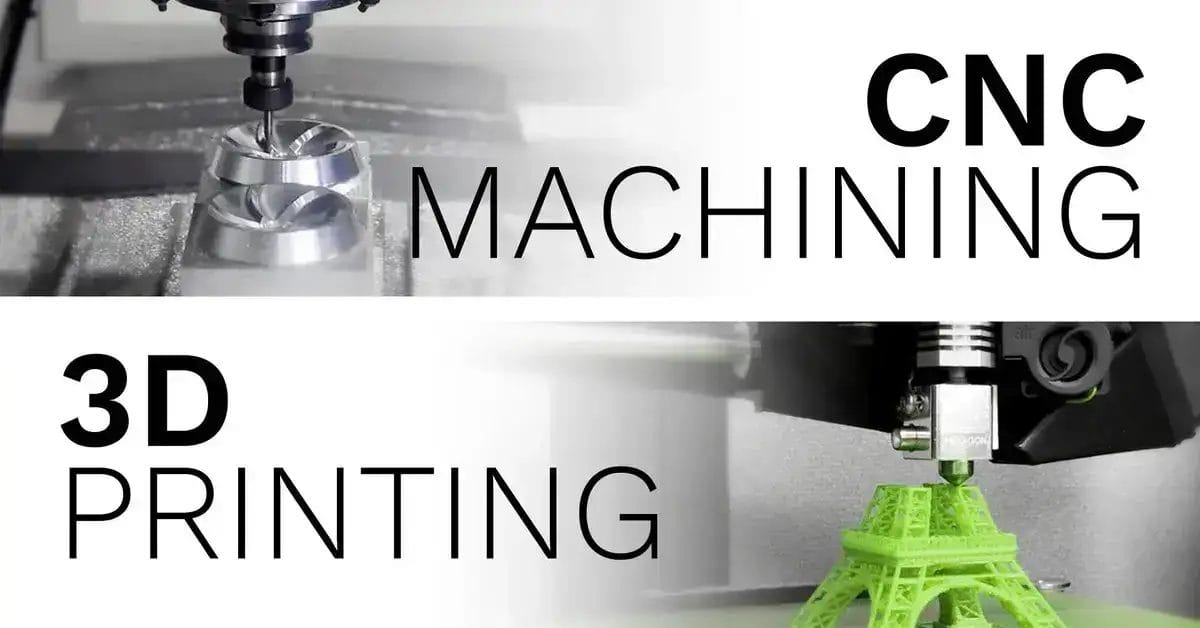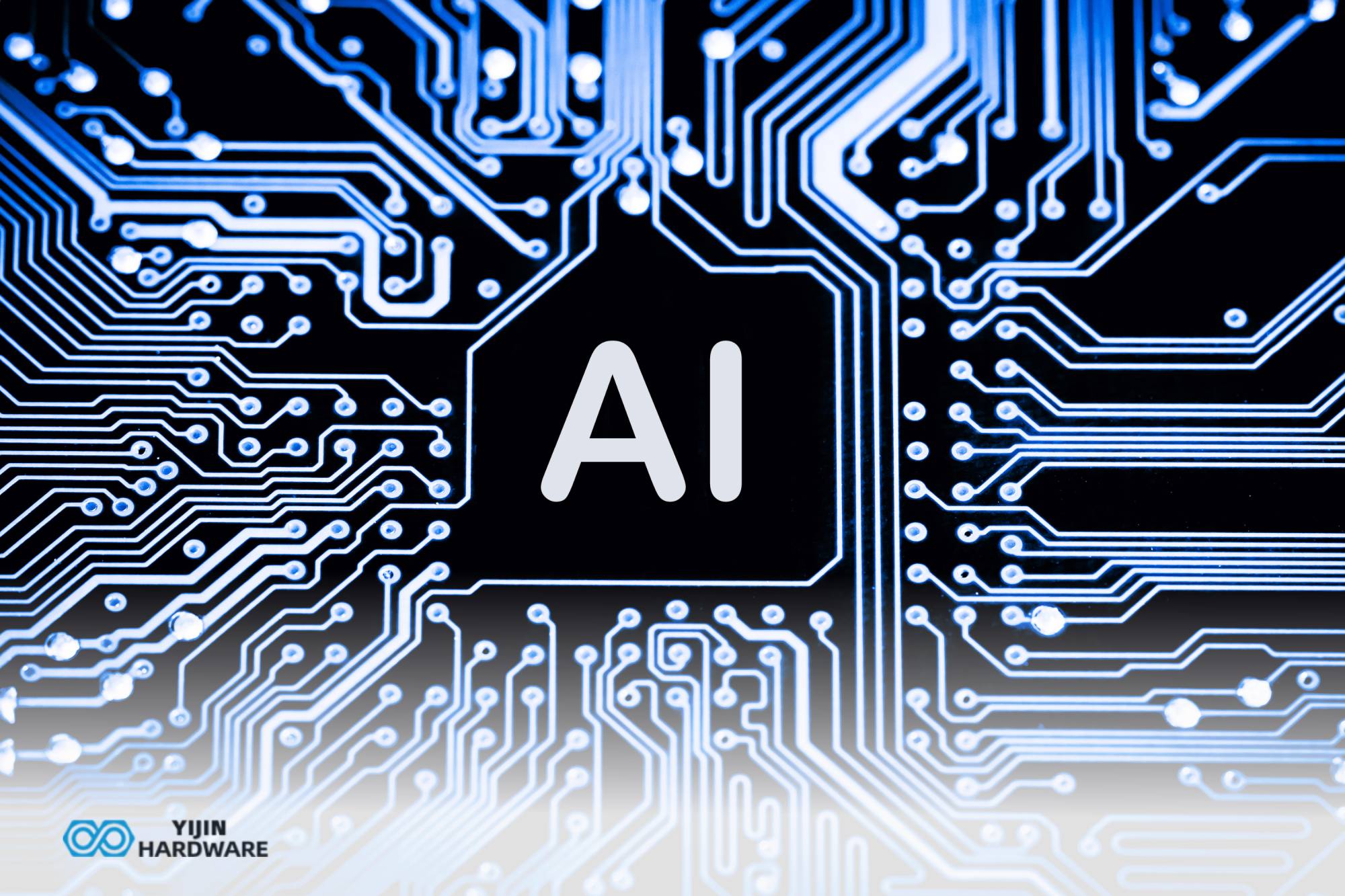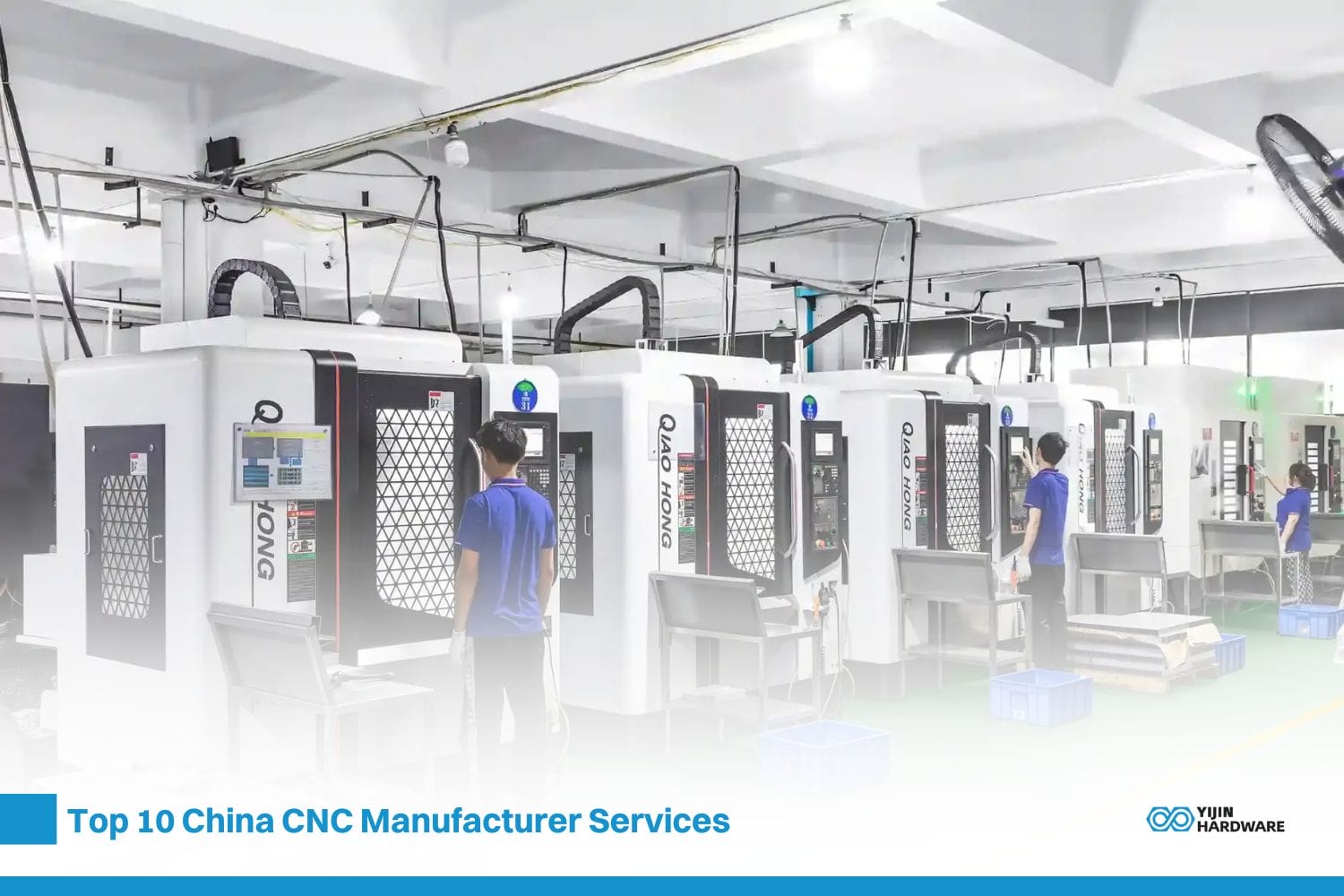There are many ways to make things these days. There are a lot of options for product designers and engineers, which is generally good for businesses. (Computer Numerical Control) CNC vs 3D printing are the two leading manufacturing technologies. This is used for rapid prototyping and low-volume production. However, completely different production techniques were used to achieve the result.
CNC uses subtractive methods, which involve removing unnecessary parts from a block of material. In contrast, 3D printing uses additive methods to build a product layer by layer, starting with a blank surface.
Both manufacturing technologies pose advantages and disadvantages. That being said, it can be hard to figure out which one to use in your project and when. This guide was made to show you the differences between CNC and 3D printing. This will help you see all the ins and outs of each method and make informed decisions.
Process Overview: CNC Machining vs 3D Printing
Although both processes are standard today, each has evolved to meet different demands. Thus, it is important to know which method will best suit your needs.
CNC Machining
Computer Numerical Control (CNC) is a common type of subtractive manufacturing. This means it carves out needed components from large blocks of material. CNC machining can produce parts that are strong and have precise dimensions. It tends to be best for engines, airplane machinery, and other fields where robust parts are needed. It is common in industries such as woodworking, lettering, and engraving.
3D Printing
It is a form of manufacturing known as additive manufacturing. In many ways, this process is the opposite of CNC cutting. 3D printers add layers of material to a piece of work instead of taking away material. This helps build up the finished component. The printer reads a digital model and deposits the materials according to the geometry of the model. This technology is quite new but has gained vast popularity over recent years due to its ability to quickly produce complex objects.
Difference Between 3D Printing vs. CNC Milling
CNC machining and 3D printing offer distinctive approaches to manufacturing. Each has its own set of advantages and considerations.
CNC machining, characterized by its subtractive nature, excels in producing high-quality prototypes. The final parts also have minimal post-processing requirements.
With its additive process, 3D printing excels in rapid prototyping and custom designs. This advantage is significant in-house, eliminating the need for various tools. The choice between CNC machining vs 3D printing hinges on different factors. This includes:
Volume, post-processing requirements, material suitability, and the engineer’s specific needs and preferences.

Here are some of the key differences between the two technologies:
Accuracy and Precision
It is well known that CNC tools are very accurate and precise. They can make things with very tight tolerances and get the same results every time. CNC tools are used in fields where accuracy is very important.
Space and medical production are two examples of these types of businesses. These days, 3D printers can make things with a lot of detail, but they might not always be as accurate as CNC tools.
Lead Time
CNC machines can produce parts faster than 3D printers. CNCs typically can do the same task within hours, compared to days or even weeks for 3D printers.
Due to 3D printers’ rapid and affordable production capability, designers can iterate on designs before finalizing them for production. This ability to quickly iterate and refine designs can reduce development time.
Cost
Cost estimates of CNC machining depend on several variables, including:
Complexity, type of material used, and length of production time all affect production costs for parts.
3D printing can be quite cost-effective when considering individual parts or workpieces as cost factors.
Material
CNC machines can work with different materials, such as metal, wood, and plastic. They can produce strong and durable parts, which makes them perfect for applications where strength and durability are critical.
3D printing provides precise control over how much material is consumed due to its additive process.
Applications
CNC machines have applications in numerous industries, including aerospace, automotive, and medical manufacturing.
3D Printing can be a superior method to prototype products quickly and create small production runs rapidly. It also allows for the production of quality end-objects. Such industries are architecture, fashion, and product design.
Advantages of CNC Machining
The benefits and limits of CNC machining might vary depending on the equipment used. But some common advantages and disadvantages of 3-axis CNC milling machines are as follows:

- Good for low to mid-volume production.
- Custom basic shapes are obtainable using custom machining steps,
- Short to mid-range lead times,
- Starting with a block, the properties will be the same in every direction, achieving isotropic parts,
- There is a wide choice of materials (metals, polymers, composites, wood, ceramics).
Disadvantages of CNC Machining
- Complex geometries are expensive because they require multiple repositioning steps,
- Geometry constraints, no hollow geometries, and undercuts are difficult and costly to achieve,
- Due to the limit in the complexity of the designs, no integrated assemblies are manufacturable,
- Speed depends on part complexity. Hence, complex parts will take longer to manufacture.
- Need for trained workers to operate the machines,
Advantages of 3D Printing
- The cost of 3D printing is usually less than other ways of making complicated net forms. It only needs a small amount of setting and operation.
- More and more, 3D printers that are easy to use in the office and don’t take a lot of skill to set up and maintain are becoming common. Also, they are getting better at meeting most people’s wants.
- 3D printers are easily accessible now. And there is no difficulty of transportation like one faces while importing from other countries.
Disadvantages of 3D Printing
- When compared to the “native” qualities of the materials, the strengths of the different 3D printing methods are different. It has been said that as little as 10% of the material UTS for FFF in ABS and as much as 100% for nylon SLS.
- 3D printing can achieve good dimensional accuracy, but it can be challenging where high precision is required. CNC machining is exact and allows improved accuracy by slower processing.
- 3D printing is generally affected by process mechanics concerning surface finish. Z-resolution, in particular, brings stepped surfaces and visual disruptions. CNC surface finish is as machined; it can be extraordinarily uniform and exact if cutter paths are programmed for a smooth finish.
Also Read:
CNC Machining vs Manual Machining
CNC Machining vs Injection Molding
Comparison Table Between 3D Printing and CNC Machining
| Attribute | 3D Printing | CNC Machining |
|---|---|---|
| Unlimited Material Availability | No | Yes |
| Part Design | Unrestricted by process constraints | Limited by undercut and internal access, tool path and tool type, axis-defined minimum radii, and the need for repositioning mid-task |
| Operator skill | Generally relatively low | Very high |
| Speed of Build | Low setup time, but build time generally takes hours | Can be very high setup and programming time; cutting stages are very fast |
| Surface Finish | Grained, rough, and stepped; features are often blurred | Can deliver very high surface quality by using longer cut times |
| Strength | Often, 10–20 % of native material | Generally, 100 % of native material |
| Cost | Assume a cost of $X | Generally $5X to $10X |
Read More: CNC Milling VS CNC Turning
Different 3D Printing Materials
Metals, polymers, clay, and other materials are all commonly used by 3D printers.
Polylactic Acid:
PLA, more commonly known by its acronym, is an eco-friendly thermoplastic often utilized in 3D printing applications. It is produced from recycled cornflour or sugarcane waste and degrades over time naturally—its environmental footprint is minimal!
Acrylonitrile Butadiene Styrene (ABS):
It is one of the most robust materials available and is frequently employed in 3D printing processes.
PETG (Polyethylene Terephthalate Glycol):
PETG thermoplastic polymers excel at impact resistance and heat retention, producing items with smooth surfaces that look fantastic while lasting for many years. When printed, their products make great impressions!
Nylon:
Nylon PA12 and PA11 thermoplastic fiber are commonly used in 3D printing due to their long lifespan; however, printing with it can sometimes prove challenging; heated chambers may be needed for optimal results and to stop the warping of fabric from occurring.
Metal:
3D printing with metal produces objects with outstanding structural strength relative to weight, often found in medical and aerospace fields.
Ceramic 3D:
Ceramic 3D printing utilizes materials such as porcelain, clay, and stoneware. It creates objects with many small elements that can be used in art and design endeavors.
Types of CNC Machines
There are several different types of CNC machines, each with its own unique capabilities and applications. Here are some of the most common types of CNC machines:
CNC Milling Machines: CNC milling machines use cutting tools to extract material from a workpiece and shape it to the exact specifications.
CNC Lathes: CNC lathes operate by turning the workpiece around a central axis. The object is then shaped by using cutting tools to eliminate excess material. Turret lathes, engine lathes, and special-purpose lathes are all examples of CNC lathes.
CNC Routers: A CNC cutter is similar to a CNC mill in several respects. However, it is often used exclusively for soft materials and is not as precise as CNC mills.
CNC Lasers: CNC laser cutters use an extremely focused laser beam to cut through any material. A CNC laser cutting equipment allows for more precise cuts than plasma cutting.
Are You Looking For A Manufacturing Partner?
Now you understand the pros and cons of CNC machining vs. 3D printing, their differences, their relationships, potential uses for each method, and what each may mean in practice.
CNC tools are known for their exceptional accuracy and precision. This makes them suitable for tasks requiring highly precise results. Meanwhile, 3D printing offers a viable option when creating intricate prototypes, forms, or geometries.
Ultimately, the decision depends upon each unique project’s goals. Both technologies are applicable in modern production.
Are you considering employing CNC machining or 3D printing to create objects? Both rapid prototyping and precise parts have their advantages. Consult Yijin Hardware, your trusted manufacturing partner, about your options. Come see us to learn more.

 info@yijinsolution.com
info@yijinsolution.com (+86) 188-2253-7569
(+86) 188-2253-7569







